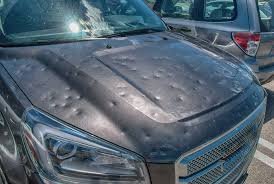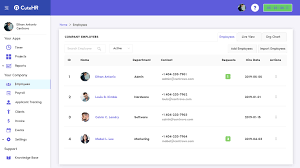Hail Damage Car Insurance Claim: Everything You Need to Know

If you live in an area prone to severe weather, chances are you’ve experienced hailstorms that left your car with dents or broken glass. In such cases, knowing how to handle a hail damage car insurance claim can save you time, money, and stress. This comprehensive guide explains what’s covered, how to file a claim, and what steps to follow to ensure you receive the compensation you deserve.
1. What is Hail Damage in Car Insurance Terms?
Hail damage refers to physical harm caused to your vehicle by hailstones during a storm. This may include dents on the body, chipped paint, or shattered windshields. Most auto insurance policies cover such damage under comprehensive coverage, which is optional but highly recommended.
To start a hail damage car insurance claim, your policy must include comprehensive insurance. Without it, any repairs will likely be out of pocket. So before the storm season hits, it’s a good idea to check your current coverage.
2. Does Car Insurance Cover Hail Damage?
Yes, but only if you have comprehensive insurance. Liability insurance alone won’t help in this case. Comprehensive coverage protects your vehicle from non-collision incidents such as theft, vandalism, fire, and yes—hail damage.
So if you’re wondering whether you can file a hail damage car insurance claim, check if your policy has comprehensive protection. If it does, you’re in luck. Your insurer will typically cover the cost of repairs minus the deductible.
3. How to File a Hail Damage Car Insurance Claim
Filing a hail damage car insurance claim is a straightforward process if you follow the right steps. Here’s what to do:
-
Step 1: Document the Damage
Take clear photos of your car from multiple angles, including close-ups of dents, broken windows, and paint damage. This documentation strengthens your claim. -
Step 2: Review Your Policy
Understand what’s covered and what your deductible is. This helps manage expectations and avoid surprises. -
Step 3: Notify Your Insurance Company
Contact your insurance provider as soon as possible. Most companies offer mobile apps, websites, or hotlines for quick claim submission. -
Step 4: Schedule an Inspection
An insurance adjuster may inspect the vehicle or direct you to an approved repair shop. -
Step 5: Get a Repair Estimate
Once the inspection is complete, you’ll receive a repair cost estimate. This determines the compensation you’ll receive. -
Step 6: Approve Repairs
After the claim is approved, schedule your repairs. Some insurers may even handle the payment directly with the repair shop.
4. Tips for a Successful Hail Damage Car Insurance Claim
Making a successful hail damage car insurance claim depends on preparation and communication. Here are a few insider tips:
-
Act Quickly: Insurance companies usually set deadlines for claims. The sooner you act, the better.
-
Avoid DIY Repairs: These may reduce your payout or void your claim.
-
Don’t Skip the Inspection: It validates your damages and confirms your claim.
-
Choose a Trusted Repair Shop: Preferably one in your insurer’s approved network.
-
Know Your Deductible: Claims less than your deductible won’t be compensated.
5. Common Hail Damage Repairs Covered by Insurance
Hail damage varies in severity, and so does the cost of repair. Most hail damage car insurance claims involve the following types of repair:
-
Paintless Dent Repair (PDR): For minor dents, this method restores the original look without repainting.
-
Panel Replacement: If dents are too deep, the entire panel might need replacement.
-
Glass Replacement: Cracked or shattered windshields are typically covered.
-
Repainting: Large areas with chipped paint will likely need a full repaint job.
6. How Long Does a Hail Damage Claim Take?
Once filed, a hail damage car insurance claim may take anywhere from a few days to a couple of weeks to settle. Factors include the insurance company’s process, the extent of the damage, and availability of parts. Peak storm seasons may also delay claim processing.
It’s wise to stay in regular contact with your adjuster and follow up as needed to avoid unnecessary delays.
7. Will My Insurance Rates Go Up After a Hail Damage Claim?
Many drivers worry whether filing a hail damage car insurance claim will increase their premiums. Since hail damage is considered an “act of God,” most insurers don’t raise rates for comprehensive claims.
However, multiple claims in a short time may affect your rates. Always weigh the cost of repairs against your deductible and the long-term impact on your policy.
8. Preventing Future Hail Damage
While you can’t control the weather, there are ways to protect your vehicle and avoid filing a hail damage car insurance claim in the future:
-
Park in Covered Areas: Use garages or carports when storms are forecast.
-
Invest in a Car Cover: Hail-resistant car covers can cushion impacts.
-
Use Weather Apps: Stay ahead of hailstorms by setting alerts on your smartphone.
9. Should You File a Claim for Minor Hail Damage?
This depends on the extent of the damage and your deductible. For example, if the repair cost is $400 and your deductible is $500, it’s not worth filing a hail damage car insurance claim. However, for significant damage, a claim makes financial sense.
If you’re unsure, request an inspection and estimate before deciding.
10. External Resource
For more guidance on coverage and process, you can check this helpful article:
👉 Learn more about hail damage and car insurance from NerdWallet
Conclusion
Knowing how to handle a hail damage car insurance claim gives you peace of mind during stressful weather events. From checking your coverage to understanding the claims process, being informed can make a big difference in how quickly and fairly your car is restored.
Whether your vehicle suffers a few small dents or major structural damage, having the right insurance and following the correct steps ensures you’re back on the road with minimal hassle.




